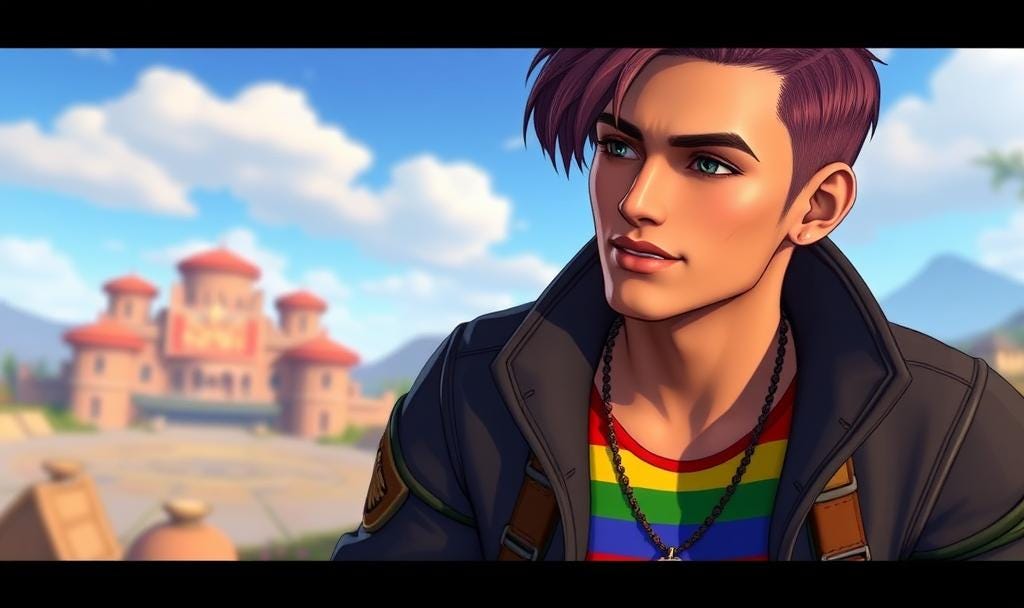Pixels with Pride: How Queer Representation is Transforming the World of Video Games
From indie darlings to AAA blockbusters, video games are rewriting the rules of inclusion, bringing authentic queer stories, creators, and communities to the heart of interactive culture.
Queer Representation in Video Games
Video games are no longer just pixelated playgrounds of escapism—they’ve evolved into powerful platforms for storytelling, identity exploration, and cultural change. Over the last two decades, LGBTQIA+ representation in gaming has shifted from hidden coding and subtle hints to fully realized characters, narratives, and worlds. This evolution reflects both the growing visibility of queer identities in society and the tireless advocacy of players, developers, and communities pushing for authentic representation.
From Stereotypes to Nuanced Storytelling
Early gaming history often relegated queer characters to coded villains or comedic relief. Representation, when present, was stereotypical, exploitative, or hidden beneath layers of implication to bypass censorship. Titles like The Sims quietly allowed same-sex relationships but avoided explicit acknowledgement. Today, games like The Last of Us Part II, Life is Strange, and Dream Daddy present complex queer protagonists whose identities are integral yet not tokenized—transforming the way players engage with diverse characters.
Queer Game Developers and Storytelling Innovation
Behind the scenes, queer developers are reshaping the medium. Independent studios like Fullbright (Gone Home) and developers like Robert Yang (The Tearoom, Radiator 2) use interactivity to tell stories that mainstream publishers once considered “too niche.” These creators infuse games with lived experiences, challenging industry norms and expanding the possibilities of narrative design. Their work proves that queer storytelling is not just representation—it’s innovation in game mechanics, world-building, and emotional engagement.
Fan Communities as Catalysts for Change
Fan-driven platforms such as Twitch, Discord, and Itch.io have become safe havens for queer gamers and creators. These spaces allow marginalized voices to share indie projects, mod mainstream games for better representation, and create fanfiction and fan art that expand on queer narratives. Crowdfunding success stories demonstrate that audiences are hungry for diverse stories—often outpacing traditional publisher support. The relationship between developers and these communities is mutually reinforcing, turning inclusion into an ongoing, collaborative process.
Why Representation Matters in Play
Video games offer an immersive medium where players inhabit characters’ lives and decisions. When those characters are queer, the impact goes beyond visibility—it fosters empathy, challenges prejudice, and offers validation for LGBTQIA+ players. Studies have shown that inclusive gaming environments reduce social isolation and increase resilience among queer youth, proving that representation is both a creative and social imperative.
The Road Ahead for Queer Gaming
The fight for representation is far from over. Many games still perpetuate harmful tropes or exclude queer identities entirely, and backlash against inclusive titles persists. The next frontier lies in intersectional representation—ensuring that queer characters reflect diverse races, abilities, and cultures—and embedding inclusion into all genres, from strategy to sports games. Progress requires industry commitment, consumer demand, and continued grassroots advocacy.
Conclusions
Queer representation in video games has moved from the margins to a central force shaping the industry’s future. This transformation is driven by a combination of authentic storytelling from queer developers, vocal fan communities, and the recognition that diversity isn’t a marketing gimmick—it’s a creative necessity. Video games have the power to let players live stories they’ve never experienced, and for queer gamers, that means seeing themselves as heroes, leaders, and complex human beings. The digital worlds we create today will define the cultural landscapes of tomorrow, and in gaming, inclusion isn’t optional—it’s the quest worth winning.
References (APA)
Shaw, A. (2014). Gaming at the edge: Sexuality and gender at the margins of gamer culture. University of Minnesota Press.
Ruberg, B., & Shaw, A. (2017). Queer game studies. University of Minnesota Press.
Consalvo, M. (2009). Cheating: Gaining advantage in videogames. MIT Press.
Anthropy, A. (2012). Rise of the videogame zinesters. Seven Stories Press.
Gray, K. L. (2014). Race, gender, and deviance in Xbox Live. Routledge.
Shaw, A., & Friesem, E. (2016). Where is the queerness in games? Television & New Media, 17(3), 243–257.
Condis, M. (2018). Gaming masculinity: Trolls, fake geeks, and the gendered battle for online culture. University of Iowa Press.


